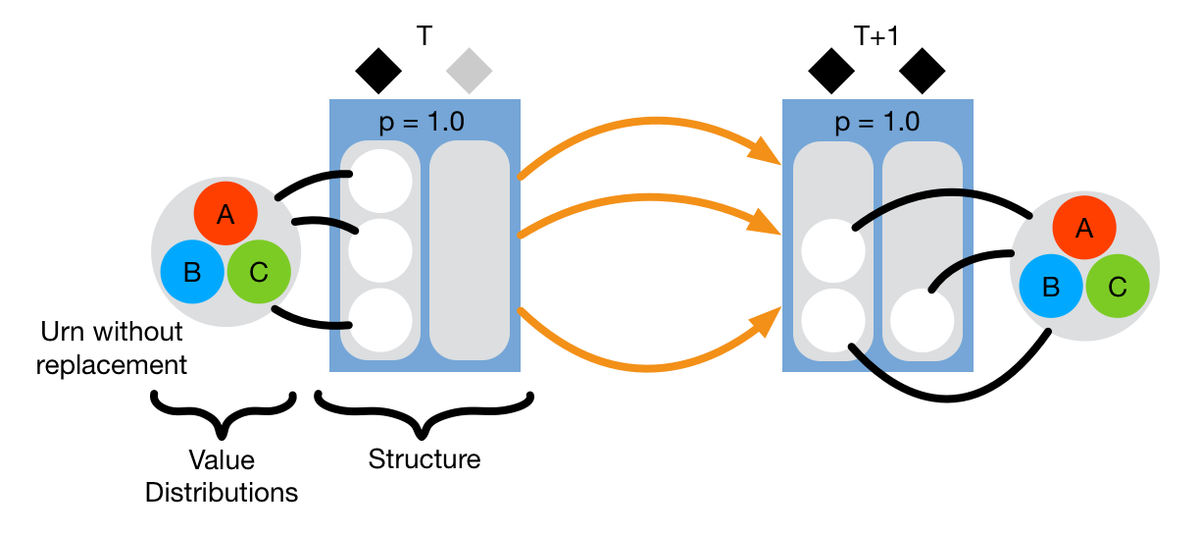Lifted Marginal Inference
Lifted Marginal Inference is a Bayesian Filtering approach that exploits symmetries in the state space that arise due to the observation data to make probabilistic inference feasible for large scenarios that exhibit such symmetries.
Details
Bayesian Filtering in discrete state spaces resulting from symbolic models (e.g. models of human behaviour) is a challenging task because the state space space can grow very lare due to redundancies and symmetries. One of these symmetries is observation-equivalence, i.e. multiple states that are distinct, but cannot be distinguished based on the sensor data. This is for instance the case in multiple person tracking by use of anonymous sensors or assisted manufacturing, where the identity of different tools and parts is uncertain, but cannot be discarded completely. Lifted Marginal Filtering is a Bayesian Filtering algorithm that exploits these symmetries by representing symmetrical states by a single, parametric state representation. The representation, and the state dynamics is based on Probabilistic Multiset Rewriting Systems. The concept to exploit the symmetries is inspired by Lifted Probabilistic Inference algorithms. Bayesian Filtering tasks that exhibit such symmetries occur for example in the context of smart environments, assisted living, and security.


Key Publications
- M.Schröder, S. Lüdtke, S. Bader, F. Krüger, T. Kirste.LiMa: Sequential Lifted Marginal Filtering on Multiset State Descriptions. In Inproceedings of the 40th German Conference on Artificial Intelligence (KI), 2017
The following works are licensed under a Creative Commons Attribution 4.0 International License:
